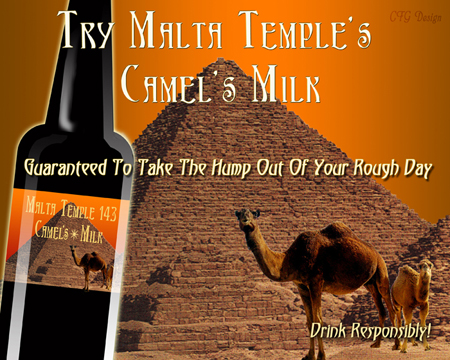
One of the most common Orientalist tropes about the Middle East is the image of the camel, the ship of the desert. Bernard Lewis angered Edward Said by comparing one of the Arabic terms for revolution (thawra) to a camel’s rising, a point made in the old Arabic lexicons. But the camel strikes back on Sharjah Television. On the program “Medicine and Islam” the benefits of camel’s milk are spelled out, including some rather grand claims.
The video on Islamic Tube is accompanied by the following article from the Khaleej Times:
SHARJAH. A research body here is seeking global tie ups to produce drugs to treat deadly diseases including Aids from the unique antibodies found in camel`s milk.
The Arab Science and Technology Foundation that is working on a project to produce recombinant RNA from antibodies found in camel`s milk to treat several diseases like cancer, Alzheimer`s and hepatitis C, apart from Aids, plans to approach American and European pharmacological organisations, said a top official.
`We are optimistic about finding investors to sponsor the project as laboratory tests have proved the milk component`s efficiency in treating different types of diseases through such medicines. Despite the tremendous curative efficiency of the camel milk on a range of diseases, we will focus on its potency of curing Alzheimer`s, Aids, cancer and hepatitis,` Imad Ghandour, the foundation`s business development director, told Khaleej Times.
The production process of any medicine costs up to $800 million, said Ghandour, adding: `Translating an idea (to produce a medicine) into a project and finally having the medicine on pharmacies` shelves is very costly. Money is needed not only to manufacture the medicine from herbs or natural materials but also to get the approval for it from American and European health organisations.`
Besides, the experimental phase of any drugs takes between eight and 10 years, according to Ghandour. The drug producers have to ensure the product has no side effects. To guarantee a 100 per cent curative effectiveness and clearance from side effects, huge capital is needed.
`An American company � which produced a medicine that later showed dangerous side effects and caused fatalties after two years of hitting the markets � is facing real troubles,` he pointed out.
The concept of using camel`s milk was initiated by Dr Sabah Al Jasim of the Shaikh Zayed Medical Herbs Centre. He conducted a series of laboratory tests, proving the curative efficiency of the milk on different chronic and serious diseases. Dr. Al Jasim then submitted his research to the foundation to apply for patent and manufacture it.
Dr. Al Jasim`s proposal is based on the discovery of a large number of viral antibodies in camel`s serum and milk. The antibodies show exposure to diseases by which they are not infected. A fact proven by the fact that camels are unaffected by diseases like bovine spongiform encephalopathy (mad cow disease) that affects other cattle, according to the research.
Microbial diseases including leptospirosis, glanders, epizootic ulcertaive syndrome, lymphangitis, mastitis, pasteurellosis, paratuberculosis, tetanus, botulism, gas gangrene clostridia, the plague and the rickettsias also appear to be of very minor importance to the camel in comparison to other domestic animals, according to Dr. Al Jasim.
The relatively low molecular weight of the camel`s heavy chain antibodies and certainly the recombinant VHH derived from these heavy chain antibodies, confer a big advantage here compared to common human antibodies.
The camel antibodies have the same antigen affinity as normal antibodies consisting of light and heavy chains, but are much smaller. Moreover, the comparative simplicity, high affinity and specificity and the potential to reach and interact with active sites, camel`s heavy chain antibodies present advantages over common antibodies in the design, production and application of clinically valuable compounds.
This makes them good candidates to penetrate dense tissues to reach the antigen, where larger proteins cannot.
`The first step is to find sponsors for the project. Then, two years will be needed to prove curative effectiveness of drugs generated from camel milk on human beings. Results on volunteer patients will then be submitted to American and European organisations for approval on its manufacture � a process that usually takes up to eight years,` Ghandour elaborated.
The foundation aims at adopting the project to promote science in the Arab world, by mediating among Arab scientists, innovators, Arab businessmen and investors. By facilitating the interaction among them sharing the goal of improving scientific capability building inside the Arab world, noted Ghandour.`